Jacque Raymer has announced the release of MakuluLinux 6.0 "MATE" edition, a Debian-based distribution featuring the recently-released MATE 1.8 desktop environment: "The first release in our new 6 series dubbed 'Imperium' (Latin for 'power to command'), also our first dual-mode solo MATE build. This release allows users to customize their settings and software upon installation. Now users can setup their desktop the way they want it with the software they want while still experiencing an out-of-the-box experience. Those that don't want an out-of-the-box experience will now have an option to turn the system into a bare-bone system with a few clicks. Features: based on Debian 'Testing'; 3.13.x PAE kernel; full systemd support."
The proposition of trying out the recently released Mate 1.8 desktop and how Makulu tweaks it, is definite enticing enough for me to try out MakuluLinux 6.0 Mate. I haven't used Mate spin of MakuluLinux earlier; but I liked their XFCE spin a lot. This South African distro is a bit gaudy to my taste but I liked their originality. So, I downloaded the 1.7 GB 32-bit ISO with PAE kernel.
I created a live USB using Linux Mint Image Writer and booted it up on my Asus K55VM laptop with 2.3 Ghz 3rd generation Core i7 processor, 8 GB DDR3 RAM and 2 GB NVIDIA GeForce 630M graphics. Unlike other Debian/Ubuntu based distros, MakuluLinux has a username password for live boot (Makulu/makulu). Post live boot and a quick check that everything is working as expected, I installed MakuluLinux Mate on a 50 GB partition.
MakuluLinux 6.0 Mate ships with Mate 1.8.0 desktop and Linux kernel 3.13.0, pae which works well on 64-bit systems with more than 4 GB RAM as well. Caja 1.8.0 is the default file manager in the distro. Makulu is based on Debian testing.
Installation
Installation is still as messy as it was earlier. It seems never ending and took me ages to complete all the steps. I think the developers can take a leaf of Linux Mint Debian and streamline the installation process a bit. I never answered so many questions even in Slackware installation! I understand that it wants to give users more control but would do a great favor if the number clicks and steps are reduced.
Post-installation Script
I liked this part where users get more freedom to choose installation configuration. It sets up respositories, does a system update, configures software (what to retain and what not), system settings set up (docky, compiz on/off, system locale, time zone, variety wallpaper changer on/off, etc.) and finally selects what driver is appropriate for the machine. I found it very helpful for a Linux novice. MakuluLinux ships with a whole lot pre-installed packages but if you would like to build your system from scratch, this post-install script may be particularly handy. Further, those who try operating systems in a virtual environment, may also find the script helpful as it has options for users to select if the operating system is installed on a physical machine or a virtual environment. A step by step options that I selected for my installation of MakuluLinux Mate is shown below. In MakuluLinux, I didn't have to manually install and configure bumblebee - the post installation script did it all.
Post-installation script is the only positive in the MakuluLinux installation process.
Score for Installation: 4.5/10
Aesthetics
MakuluLinux 6.0 Mate ships with the Makulu themed Mate desktop. It definitely looks wonderful both with and without compiz. Conky Manager and Variety wallpaper changer add to the aesthetics of the distro undoubtedly.
However, I found the desktop to be a bit unstable. At times, the desktop icons of home folder and trash will vanish to again come back on next boot. Similarly the docky and compiz will stop working at times to again come back on next reboot. Of course, I didn't encounter any experience of application freezing during use in MakuluLinux Mate, but, redecorating the desktop in almost every boot hampered my otherwise great experience with MakuluLinux.
Caja 1.8.0 looks pretty good with Makulu theme. Icons are a bit loud but icon theme can be changed. Like all good file managers, Caja also give image and file previews, which is nice.
Boot splash is graphical but no special design there. Grub is customized and colorful. Since I used a physical machine for testing the distro, I could record neither of these two.
MakuluLinux 6.0 Mate ships with both compiz and emerald pre-installed. It is a good thing as, I guess, none of the Debian repositories now maintain these two utility packages. Further, compiz is pre-configured and with all possible effects. In addition, menu has options to switch compiz off in case it makes your system slow.
Similarly, by default the desktop has a pre-configured docky with some utility applications already pinned. In case you don't like it, you can easily turn it off from the menu option.
Overall, I like the aesthetics, it is original and Mate desktop environment never looked so attractive. I understand a lot of effort from the developers went in to make it work. However, sometimes I felt that it is slightly unstable. Possibly these are minor bugs and can be ironed off within a few updates.
Score for Aesthetics: 7/10
Hardware Recognition
Hardware recognition in MakuluLinux 6.0 Mate is impeccable and everything worked as it should. The distro accurately recognized my laptops screen resolution, sound card, wifi, Lan and touch pad.
Score for Hardware Recognition: 10/10
Pre-Installed Packages
MakuluLinux ships with a whole lot of packages for daily use that I guess you barely need to touch the software manager, namely:
Multimedia codecs are pre-installed along with Adobe flash plugin. Multimedia files and live stream worked quite well in Mukulu.
In overall, MakuluLinux ships an envious collection of utility applications and I don't anything missing here The list is as complete and best in class.
Score for Pre-Installed Packages: 10/10
MakuluLinux Mate Control Center
I really liked the Mate control center in MakuluLinux. Every control, starting from screen resolution to graphic card drivers, is all listed there, easy to browse, access and manipulate. Very handy for users new to Mate and Linux in general.
Repositories
One good thing about MakuluLinux is that it stays true to Debian testing and doesn't route Debian packages through own servers. I had some issue in updating Linux Mint Debian as everything was routed through Linux Mint servers and during my usage, the servers were inaccessible. Same thing happened with Pardus as well. Plus, another good thing about MakuluLinux is that repositories can be easily edited by clicking "Edit Sourcelist" from the menu.
Further, Linux Mint Debian is added as an additional repository source, which means packages like Firefox, Image writer, USB formatter, etc. can be easily accessed and downloaded in MakuluLinux.
Alongside, third party repos like Skype, Google Earth, Google Talk, etc. are also configured to ensure ready access to these packages in the package manager.
Linux Mint Software Center or MintInstall is the default package manager in MakuluLinux. It works a bit slow but is is easy to use and reliable.
Synaptic package manager is provided in addition to browse and install packages for experienced users. It works really fast and my preferred mode of installation when I am not using the terminal.
MakuluLinux has in addition two applications: Application Installer and Application remover. Both of them require users to state the exact name of the package to install/remove. Once the name is stated, terminal opens up to run the code. I found it to be conceptually good for users not comfortable running commands in the terminal. But, they seemed to be a bit unnecessary for me. In general, my experience tells that people who are scared of terminal can't remember the exact name of the package. For them, software center is the best bet rather than these two.
Performance
MakuluLinux 6.0 Mate appeared to be a mixed bag. It took ages to boot with auto-login enabled (about 2 minutes). Most of the distros I used on my Asus K55VM boots in 1/4th the time taken by MakuluLinux Mate. In fact, MakuluLinux 5.0 XFCE boots in about 50 seconds on this laptop.
Resource usage is slightly higher than MakuluLinux 5.0 XFCE and at steady state with htop running, Makulu Mate takes about 263 MB RAM with compiz running and 240 MB RAM without compiz and docky. I find the performance to be decent with all the tweaks and animations in place.
One good thing about MakuluLinux is that it never froze during my 6 days use. Laptop heat (with bumblebee) is minimal and battery usage is at par with best distros (about 3-4 hours).
Score for Performance: 7.5/10
Overall
MakuluLinux 6.0 Mate is a good attempt at providing something unique - an attractive Mate desktop with easy to use interface. I admit, it is the most glittery Mate OS that I've seen and used. Other Mate distros look typically bland and much less enticing than their Cinnamon counterparts. I never recommended Mate for a powerful machine and for mid/low spec machines, nothing beats XFCE. However, Makulu's attempt at Mate gives me some hope that in future I shall see some really attractive Mate spins for sure. This is perhaps MakuluLinux's first attempt at Mate and understandably there are some bugs. I hope things will ease out within a few updates.
MakuluLinux, based on the impression I got from the packages included, wants to position itself as an easy to use and trouble free rolling release distro for Linux novices. But it's complicated installation process with more control to the users, baffles me. Isn't it self-defeating? Anyway, they should make their installation process a lot easier than what it is now to make it more acceptable to new Linux users.
For now, I prefer MakuluLinux XFCE more than the Mate spin. However, GNOME 2 lovers may try it out - it looks aesthetically more pleasing than any of the Mate distros I've used, undoubtedly.
You can download the 32-bit spin with PAE kernel from here.
Overall Score: 7.9/10
Breakup
Installation (20% weight): 4.5/10
Hardware Detection (20% weight): 10/10
Aesthetics (20% weight): 7/10
Pre-Installed Packages (10% weight): 10/10
Performance (30% weight): 7.5/10
 |
| From MakuluLinux 6.0 Mate http://mylinuxexplore.blogspot.in |
I created a live USB using Linux Mint Image Writer and booted it up on my Asus K55VM laptop with 2.3 Ghz 3rd generation Core i7 processor, 8 GB DDR3 RAM and 2 GB NVIDIA GeForce 630M graphics. Unlike other Debian/Ubuntu based distros, MakuluLinux has a username password for live boot (Makulu/makulu). Post live boot and a quick check that everything is working as expected, I installed MakuluLinux Mate on a 50 GB partition.
 |
| From MakuluLinux 6.0 Mate http://mylinuxexplore.blogspot.in |
Installation
Installation is still as messy as it was earlier. It seems never ending and took me ages to complete all the steps. I think the developers can take a leaf of Linux Mint Debian and streamline the installation process a bit. I never answered so many questions even in Slackware installation! I understand that it wants to give users more control but would do a great favor if the number clicks and steps are reduced.
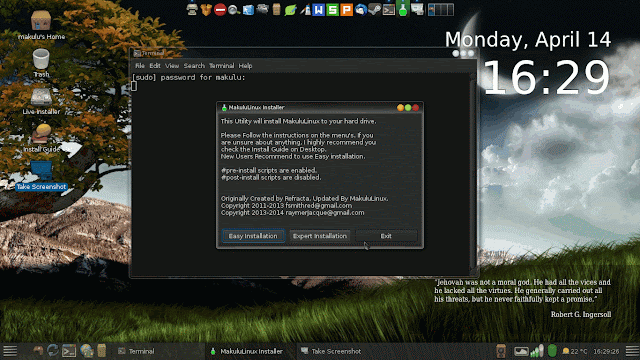 |
| From MakuluLinux 6.0 Mate http://mylinuxexplore.blogspot.in |
I liked this part where users get more freedom to choose installation configuration. It sets up respositories, does a system update, configures software (what to retain and what not), system settings set up (docky, compiz on/off, system locale, time zone, variety wallpaper changer on/off, etc.) and finally selects what driver is appropriate for the machine. I found it very helpful for a Linux novice. MakuluLinux ships with a whole lot pre-installed packages but if you would like to build your system from scratch, this post-install script may be particularly handy. Further, those who try operating systems in a virtual environment, may also find the script helpful as it has options for users to select if the operating system is installed on a physical machine or a virtual environment. A step by step options that I selected for my installation of MakuluLinux Mate is shown below. In MakuluLinux, I didn't have to manually install and configure bumblebee - the post installation script did it all.
 |
| From MakuluLinux 6.0 Mate http://mylinuxexplore.blogspot.in |
Score for Installation: 4.5/10
Aesthetics
MakuluLinux 6.0 Mate ships with the Makulu themed Mate desktop. It definitely looks wonderful both with and without compiz. Conky Manager and Variety wallpaper changer add to the aesthetics of the distro undoubtedly.
 |
| From MakuluLinux 6.0 Mate http://mylinuxexplore.blogspot.in |
Caja 1.8.0 looks pretty good with Makulu theme. Icons are a bit loud but icon theme can be changed. Like all good file managers, Caja also give image and file previews, which is nice.
 |
| From MakuluLinux 6.0 Mate http://mylinuxexplore.blogspot.in |
MakuluLinux 6.0 Mate ships with both compiz and emerald pre-installed. It is a good thing as, I guess, none of the Debian repositories now maintain these two utility packages. Further, compiz is pre-configured and with all possible effects. In addition, menu has options to switch compiz off in case it makes your system slow.
 |
| From MakuluLinux 6.0 Mate http://mylinuxexplore.blogspot.in |
 |
| From MakuluLinux 6.0 Mate http://mylinuxexplore.blogspot.in |
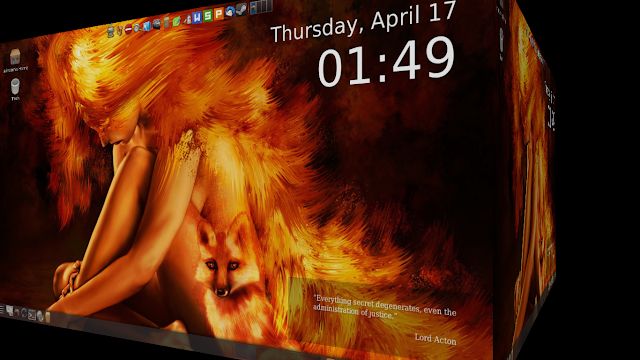 |
| From MakuluLinux 6.0 Mate http://mylinuxexplore.blogspot.in |
Overall, I like the aesthetics, it is original and Mate desktop environment never looked so attractive. I understand a lot of effort from the developers went in to make it work. However, sometimes I felt that it is slightly unstable. Possibly these are minor bugs and can be ironed off within a few updates.
Score for Aesthetics: 7/10
Hardware Recognition
Hardware recognition in MakuluLinux 6.0 Mate is impeccable and everything worked as it should. The distro accurately recognized my laptops screen resolution, sound card, wifi, Lan and touch pad.
Score for Hardware Recognition: 10/10
Pre-Installed Packages
MakuluLinux ships with a whole lot of packages for daily use that I guess you barely need to touch the software manager, namely:
- Office: Adobe Reader 9, Atril Document viewer, Dictionary, Kingsoft Office suite (Presentation, Spreadsheets, Writer), Ebook reader
- Internet: Chromium web browser, Deluge torrent client, Dropbox client, Flareget download manager, Iceweasel browser, Thunderbird email client, Mumble, Nitroshare, Pidgin IM
- Graphics: Eye of Mate Image viewer, Image Magick, Pinta, Simple Scan, Screenshot
- Multimedia: Audacious music player, Brasero CD/DVD creator, Handbrake, Minitube, PiTiVi video editor, VLC 2.1.4, Vokoscreen desktop recorder
- Accessories: Backups, Catfish file search, Cherrytrees, Conky Manager, Engrampa archive manager, Leafpad text editor, Mate Calculator, Pluma, Root terminal, Screenlets, File search, Slingscold, Sunflower, Variety, Animation on/off, Bleachbit, Docky on/off, Edit sourcelist, GDebi Package Installer, Grub customizer, Boot repair
- Others: Wine, PlayonLinux, Steam, Compiz, Emerald theme Manager
 |
| From MakuluLinux 6.0 Mate http://mylinuxexplore.blogspot.in |
 |
| From MakuluLinux 6.0 Mate http://mylinuxexplore.blogspot.in |
In overall, MakuluLinux ships an envious collection of utility applications and I don't anything missing here The list is as complete and best in class.
Score for Pre-Installed Packages: 10/10
MakuluLinux Mate Control Center
I really liked the Mate control center in MakuluLinux. Every control, starting from screen resolution to graphic card drivers, is all listed there, easy to browse, access and manipulate. Very handy for users new to Mate and Linux in general.
 |
| From MakuluLinux 6.0 Mate http://mylinuxexplore.blogspot.in |
Repositories
One good thing about MakuluLinux is that it stays true to Debian testing and doesn't route Debian packages through own servers. I had some issue in updating Linux Mint Debian as everything was routed through Linux Mint servers and during my usage, the servers were inaccessible. Same thing happened with Pardus as well. Plus, another good thing about MakuluLinux is that repositories can be easily edited by clicking "Edit Sourcelist" from the menu.
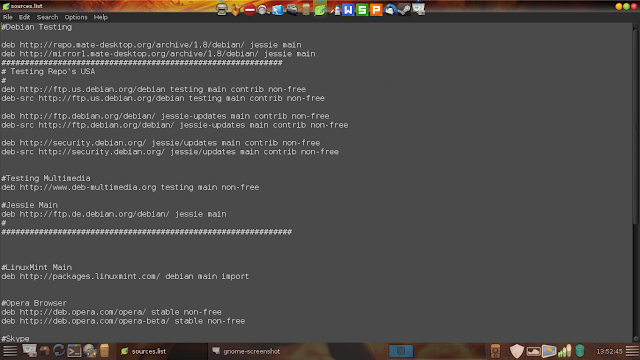 |
| From MakuluLinux 6.0 Mate http://mylinuxexplore.blogspot.in |
Alongside, third party repos like Skype, Google Earth, Google Talk, etc. are also configured to ensure ready access to these packages in the package manager.
Linux Mint Software Center or MintInstall is the default package manager in MakuluLinux. It works a bit slow but is is easy to use and reliable.
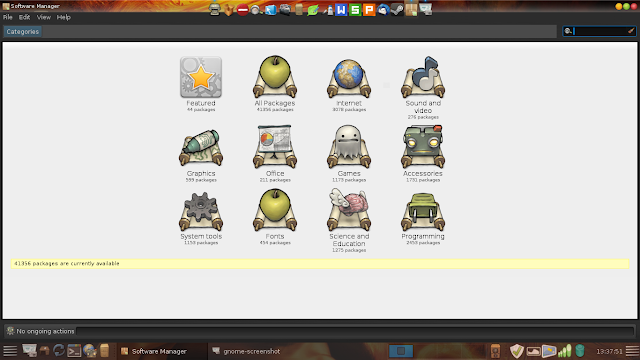 |
| From MakuluLinux 6.0 Mate http://mylinuxexplore.blogspot.in |
Synaptic package manager is provided in addition to browse and install packages for experienced users. It works really fast and my preferred mode of installation when I am not using the terminal.
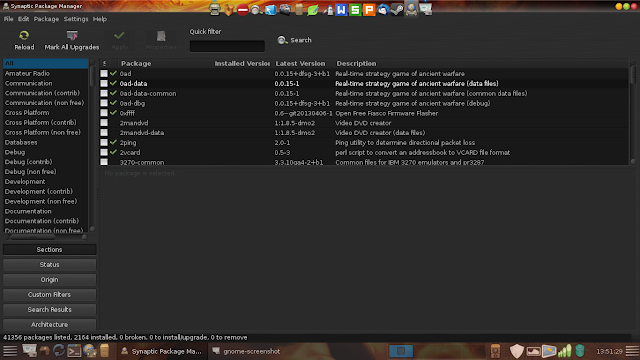 |
| From MakuluLinux 6.0 Mate http://mylinuxexplore.blogspot.in |
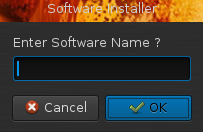 |
| From MakuluLinux 6.0 Mate http://mylinuxexplore.blogspot.in |
MakuluLinux 6.0 Mate appeared to be a mixed bag. It took ages to boot with auto-login enabled (about 2 minutes). Most of the distros I used on my Asus K55VM boots in 1/4th the time taken by MakuluLinux Mate. In fact, MakuluLinux 5.0 XFCE boots in about 50 seconds on this laptop.
| Operating System | Release Year | Size of ISO (GB) | Base | Desktop | Linux kernel | CPU (%) | RAM usage (MB) | Size of installation (GB) | Boot time (sec) |
| MakuluLinux 6.0 Mate 32-bit | 2014 | 1.7 | Debian Testing | Mate 1.8 | 3.13.0 | 0-5% | 262 | 4.2 | 112 |
| Makulu Linux 5 32-bit | 2014 | 1.8 | Debian Testing | XFCE | 3.12.1 | 0-5% | 210 | 4.8 | 50 |
Resource usage is slightly higher than MakuluLinux 5.0 XFCE and at steady state with htop running, Makulu Mate takes about 263 MB RAM with compiz running and 240 MB RAM without compiz and docky. I find the performance to be decent with all the tweaks and animations in place.
 |
| From MakuluLinux 6.0 Mate http://mylinuxexplore.blogspot.in |
Score for Performance: 7.5/10
Overall
MakuluLinux 6.0 Mate is a good attempt at providing something unique - an attractive Mate desktop with easy to use interface. I admit, it is the most glittery Mate OS that I've seen and used. Other Mate distros look typically bland and much less enticing than their Cinnamon counterparts. I never recommended Mate for a powerful machine and for mid/low spec machines, nothing beats XFCE. However, Makulu's attempt at Mate gives me some hope that in future I shall see some really attractive Mate spins for sure. This is perhaps MakuluLinux's first attempt at Mate and understandably there are some bugs. I hope things will ease out within a few updates.
MakuluLinux, based on the impression I got from the packages included, wants to position itself as an easy to use and trouble free rolling release distro for Linux novices. But it's complicated installation process with more control to the users, baffles me. Isn't it self-defeating? Anyway, they should make their installation process a lot easier than what it is now to make it more acceptable to new Linux users.
For now, I prefer MakuluLinux XFCE more than the Mate spin. However, GNOME 2 lovers may try it out - it looks aesthetically more pleasing than any of the Mate distros I've used, undoubtedly.
You can download the 32-bit spin with PAE kernel from here.
Overall Score: 7.9/10
Breakup
Installation (20% weight): 4.5/10
Hardware Detection (20% weight): 10/10
Aesthetics (20% weight): 7/10
Pre-Installed Packages (10% weight): 10/10
Performance (30% weight): 7.5/10
Good Review Sir
ReplyDeleteGreeting from Indonesia :)
Maybe, can you test the new release of Indonesian Linux Distributon, BlankOn ? :)
Hi, nice review this one and earlier of MX-14, which i had requested some time back.
ReplyDeleteOne unrelated query if you can kindly answer:-
I am trying install PCLinuxOS Mate version on my Lenovo Z-570 with Nvidia GT520M. The live session loads with difficulty, but after installing it refuses to load, getting stuck with blank display.
If i disable GT520 from BIOS and use Intel graphics, it installs and works quite nicely.
Can you suggest how do i install satisfactorily with GT520M enabled?
I am also using MakuluLinux "Mate" right now. In general very good system, nice interface, although a little unstable for some functions, such as theme setting. But, overall, it is pretty good for a Debian based system.
ReplyDelete